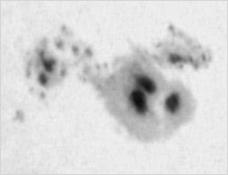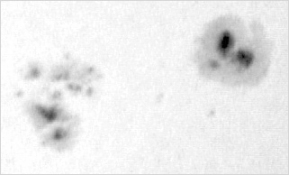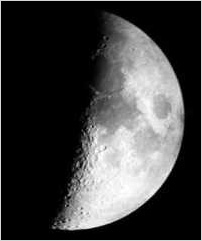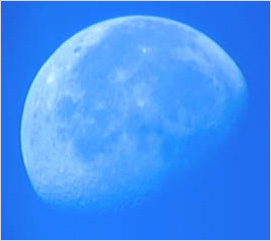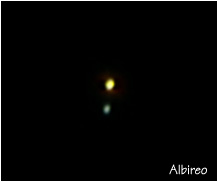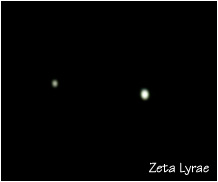
Upon hearing from other folks about doing simple astrophotography with regular digital cameras and webcams, I decided to try it out for myself. So far I've tried three different cameras: a Quikcam VC, a Philips ToUcam Pro, and a Kodak DC280.
The lenses on the webcams were removed to allow for prime focus photography. In order to fit them into the focuser, I first used a film cannister strapped to the Quickcam, and later bought a webcam adapter from Steven Mogg for the ToUcam. The DC280 is a regular digital camera, and I've had some luck holding it up to an eyepiece for moon pictures. I also recently downloaded a copy of Astrostack, a nifty freeware program that will automatically align and average a large number of individual pictures.
** Update! ** As part of my holiday shopping this year I ordered a Nikon Coolpix 995. (I subscribe to the "one for me, one for everybody else" method of shopping... it's a bit more costly than the standard method, but much more fun.) I haven't done too much with the new camera yet, but initial results are promising. Among other things, the Coolpix has a manual mode, and can do exposures up to a minute with the (hideously overpriced) remote control that Nikon sells. Fortunately I have a nice husband who (after some minor prompting) shopped around and got a pretty good deal on the remote which he then gave me for Christmas.
Here are some of my pictures...
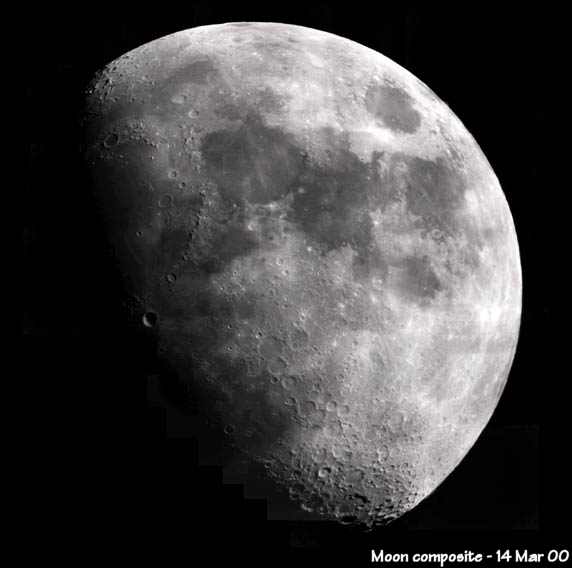
This is the first complete moon picture I took. It's taken at the focal plane with the Quikcam and my 8" dob. It was painstakingly assembled from 40 images which were extracted from avi files.
|
|
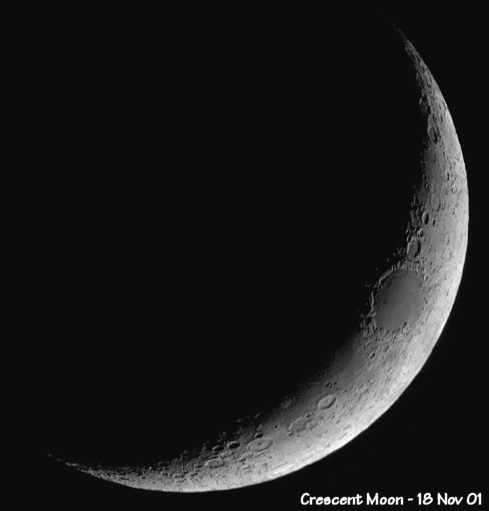
Another moon picture, this one with the ToUcam, and 127mm Mak-Cass. Composite of several frames in Adobe Photoshop.
|
|
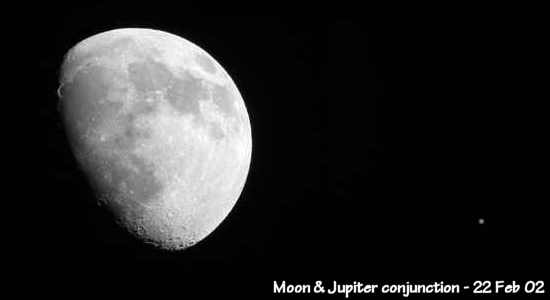
There was a nice conjunction of Jupiter and the moon recently... I missed taking a picture near sunset, but got this one later. Of course, what I really wanted to do was post pictures of the Saturn occultation which occurred two nights earlier, but that was rained out in most of New England. :P This picture was taken with my ST80 and Coolpix 995.
|

Here are a few planet pictures. Moving from left to right... The two very small pictures of Saturn and Jupiter were taken with my 8" dob and a Quickcam VC. This exercise made me think very seriously about building a driven platform for the dob. After facing the fact that I don't have the skill or tools required for this endeavor, the rest of these pictures were taken with my Mak-Cass on it's EQ mount. I haven't completely given up on the platform idea though... if somebody can figure out how to build one with an electric drill, a hand saw, and an adjustable wrench, please let me know. :)
Getting back on track, the next two pics were taken with the ToUcam. The largest picture of Jupiter was taken with my Coolpix 995, afocal w/ a 25mm eyepiece and a 2x barlow. I'm quite proud of the blurry but present Great "Red" Spot. The final picture, taken w/ the ToUcam, is an overexposed Jupiter with its moons strung out nicely alongside. The moons from Jupiter outward to the right are Io, Europa, Ganymede, and Callisto. While none of these pics are quite as clear as I've seen other people get, I think I'm improving. In any case, the motor driven mount that came with the Mak-Cass made a big difference in the level of frustration involved. The raw images for all of these pics were processed in Astrostack.
|
|
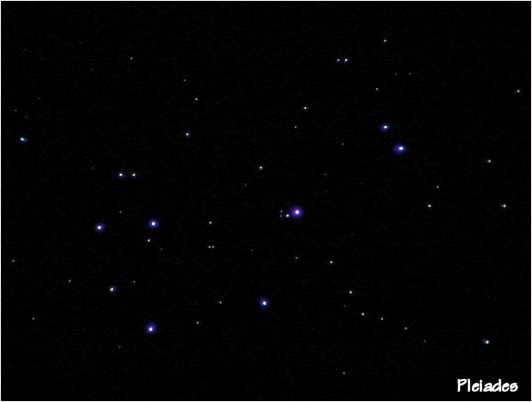
Pleiades - Eyepiece projection with a 25mm plossl hooked* to the Coolpix 995, the whole thing teetering in the diagonal of my ST80. One 8s exposure.
* Scopetronix makes a little adapter that will firmly attach an eyepiece to the Coolpix 995, as well as most other digital cameras with threaded lenses.
|
|

Orion - Olympus OM-1, 50mm lens, 10s exposure on ISO 400 film... twiddled in Photoshop, to darken the background & increase the contrast. It's not great, but considering the local skyglow & my general ineptitude, it's not too bad either. :) I got the OM-1 fairly recently, and playing with a fully manual camera has been a new experience. Hopefully this picture will be just the first in a series, and I can get a variety of pretty pics in the future.
|
|
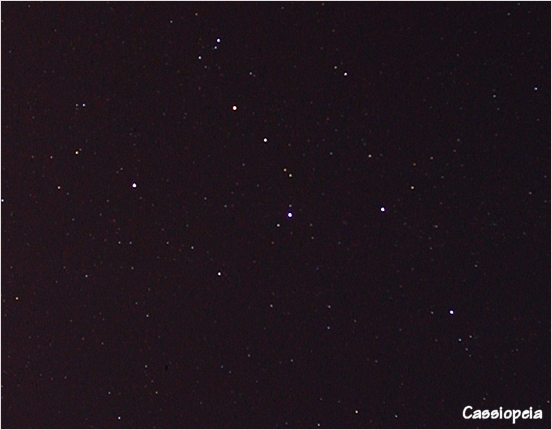
Cassiopeia - Coolpix 995, 60s exposure, no zoom. So far I've only taken a few longer exposure images with the Coolpix, but I'm pretty happy with the amount of noise that shows up. A 60s darkframe exposure at ISO 100 shows two bright pixels, and a bit of lower level noise. It's not perfect, but it's fixed easily in photoshop. The camera's built in noise reduction also does a pretty good job. This photo was taken with the camera piggybacked to the scope currently on my EQ mount. The mount was VERY roughly polar aligned, but good enough for use w/out the zoom. Pictures using the zoom, or through the scope were another story. As I can't see Polaris from my deck, I suppose practicing drift alignment is in order...
|
Home |
Astronomy |
E-texts |
Book Resources |
Fish List
This page was last updated on 28 August 2002
Jan Knowlton - talk2me(at)boop(dot)org
|






